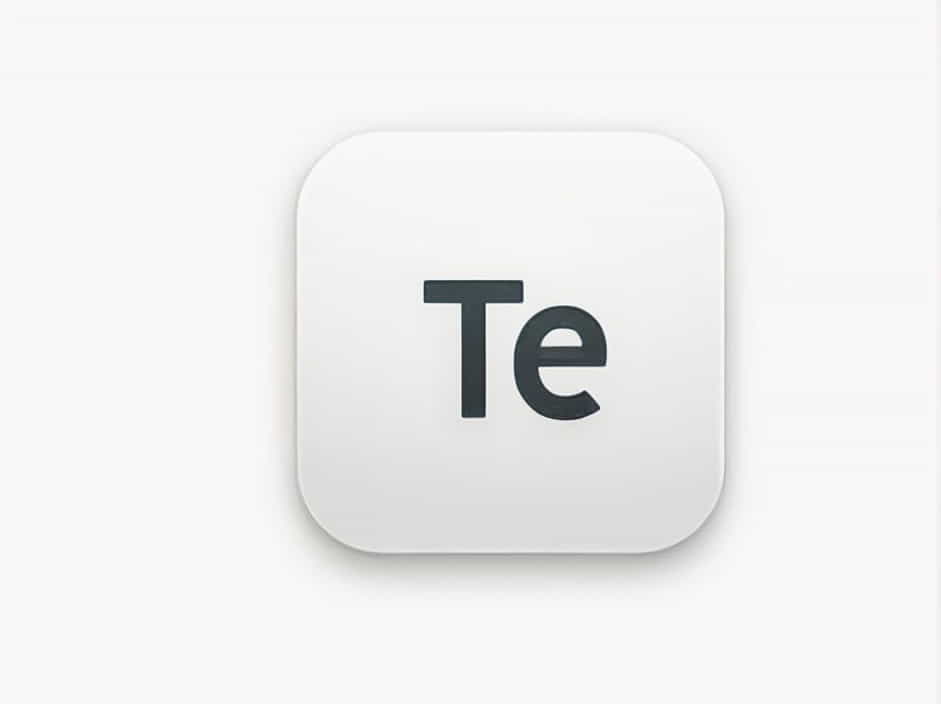Tellurium is a fascinating element with unique properties that make it valuable in various industries. Understanding tellurium’s location on the periodic table helps in predicting its chemical behavior, reactivity, and uses. Tellurium is classified as a metalloid, meaning it has properties of both metals and nonmetals.
In this topic, we will explore where tellurium is positioned on the periodic table, its characteristics, similarities to other elements, and practical applications.
1. Tellurium’s Position on the Periodic Table
A. Group and Period
Tellurium is located in Group 16 (also known as the oxygen group or chalcogens) and Period 5 of the periodic table. This group contains elements like oxygen (O), sulfur (S), selenium (Se), and polonium (Po), which share common chemical traits.
-
Group 16 elements are known for forming compounds with oxygen and hydrogen.
-
Being in Period 5 means tellurium has five electron shells, influencing its size and reactivity.
B. Atomic Number and Symbol
Tellurium has an atomic number of 52 and is represented by the symbol Te. This means it has 52 protons and 52 electrons in its atomic structure.
2. Tellurium’s Chemical and Physical Properties
A. Metallic and Nonmetallic Characteristics
As a metalloid, tellurium exhibits both metal-like and nonmetal-like properties:
-
Like metals: It has a shiny, silver-white appearance and is a good conductor of electricity when alloyed.
-
Like nonmetals: It is brittle and reacts with halogens and acids.
B. Electron Configuration
Tellurium’s electron configuration is [Kr] 4d¹⁰5s²5p⁴.
-
It has six valence electrons, meaning it tends to gain or share electrons to achieve a stable configuration.
-
This behavior is similar to oxygen and sulfur, which also form anions or covalent bonds.
C. Oxidation States
Tellurium commonly exhibits oxidation states of -2, +2, +4, and +6, allowing it to form diverse chemical compounds.
3. Tellurium’s Relationship with Other Elements
A. Similarities to Other Chalcogens
Tellurium behaves similarly to selenium (Se) and sulfur (S) in its ability to form compounds. However, as you move down the group:
-
Electronegativity decreases, meaning tellurium is less likely to attract electrons compared to oxygen or sulfur.
-
Atomic size increases, making tellurium’s bonds slightly weaker than those of its lighter counterparts.
B. Differences from Polonium
Polonium (Po), the element below tellurium in Group 16, is significantly different due to its radioactivity. Tellurium, in contrast, is stable and widely used in various applications.
4. Uses of Tellurium Based on Its Position in the Periodic Table
A. Role in Semiconductor Industry
Tellurium’s ability to conduct electricity increases when exposed to light or heat, making it ideal for semiconductors. It is used in:
-
Solar panels (as cadmium telluride, CdTe)
-
Thermoelectric devices for energy conversion
-
Memory chips and phase-change materials
B. Tellurium in Metallurgy
Due to its metalloid properties, tellurium is used to improve metal performance:
-
Added to steel and copper to enhance machinability and durability.
-
Alloyed with lead to increase strength in batteries.
C. Chemical and Medical Applications
-
Tellurium compounds are used in chemical catalysts and rubber production.
-
Some tellurium derivatives are being researched for potential antibacterial and anticancer properties.
5. Isotopes and Natural Occurrence of Tellurium
A. Naturally Occurring Isotopes
Tellurium has eight stable isotopes (from Te-120 to Te-130), with Te-130 being the most abundant. It also has several radioactive isotopes that decay over time.
B. Where Is Tellurium Found?
Unlike many elements, tellurium is relatively rare in the Earth’s crust. It is often found in gold and copper ores and is extracted as a byproduct of mining these metals.
6. Future Prospects of Tellurium
A. Growing Demand for Renewable Energy
With the rise of solar power and thermoelectric technology, demand for tellurium is increasing. Research is ongoing to make tellurium-based materials more efficient and cost-effective.
B. Potential in Medicine and Electronics
Scientists are exploring new ways to use tellurium in medical treatments, sensors, and nanotechnology. Its unique electrical properties could lead to faster and more energy-efficient computing.
Tellurium’s location on the periodic table defines its chemical behavior, similarities with other chalcogens, and industrial applications. As a metalloid in Group 16 and Period 5, it combines metallic and nonmetallic properties, making it highly valuable in semiconductors, metallurgy, and renewable energy.
With increasing demand for sustainable technologies, tellurium’s role in solar panels, electronics, and medical applications is set to expand. Understanding its periodic table position helps scientists and engineers utilize it more effectively in various fields.
